

September 2023 NewsletterISSN: 1933-8651
In this issue we present the following articles, news, announcements, and reviews:
|
Articles, Essays, and Reports
News and Announcements
New Film and Books
Book Review
|
Profiles in Practice: Nedra K. Lee
By Christopher Fennell
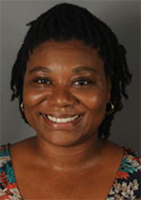
This newsletter feature on "profiles in practice" provides brief overviews of the recent activities of researchers and activists in African diaspora subjects. Please contact Chris Fennell (cfennell@illinois.edu) if you would like to contribute a profile for a future newsletter issue.
Dr. Nedra K. Lee is an Associate Professor in the Department of Anthropology at the University of Massachusetts at Boston. Over the past decade, she has emerged as a leading figure in Black feminist and critical perspectives to the practice of African diaspora archaeology and its relationship to anti-racism initiatives. She has similarly emerged as a leading voice for restorative justice in archaeological practice. As articulated in a number of her publications and in her more recent conference talks, she envisions the theme of restorative justice as encompassing initiatives for reconciliation of past societal transgressions using processes that are multivocal, dialogic, historically informed, community based, negotiated, and transformative. Lee is likewise a leading voice in specific tasks needed to decolonize the structures and practice of archaeology.
Lee participated in an all-day symposium hosted by Bard Graduate Center in New York City in 2020 on the theme of "Revealing Communities: The Archaeology of African Americans in the Nineteenth Century." She presented a talk entitled "Hiding in Plain Sight: Critical Race Theory and the Use of Space at the Ransom and Sarah Williams Farmstead." Her scholarship in such projects is notable in the rigor of the research and highly insightful as to the broader implications of the ways in which researchers frame their questions and interpretations. Lee's important advocacy with Black feminist, critical theory, and restorative justice themes was once more in evidence.
The importance of generating high quality scholarship for broader audiences of local communities, descendant communities, and the public is highlighted in the article "African American Descendants, Community Outreach, and the Ransom and Sarah Williams Farmstead Project," published by Lee and Dr. Maria Franklin in the peer-reviewed Journal of Community Archaeology and Heritage (2020). This project entailed close collaborations with descendant community members and resulted in scholarship disseminated through studies produced for that stake-holder community, a public history exhibit in the University of Texas' highly acclaimed Texas Beyond History web portal, and exhibitions at an Austin museum and an international archaeology conference. The project also addressed a shortfall in existing studies of freedmen sites and communities in Texas. This article further provided a detailed template for other investigators to follow when working to establish a meaningfully collaborative engagement with descendant and local community members within the constraints of state-funded, cultural resource management initiatives.
Another recent article by Lee and Franklin on the Williams Farmstead Project continues a long and highly productive trajectory of Lee's scholarship on foodways and material culture as providing significant evidence of cultural dynamics in African diaspora histories. "Revitalizing Tradition and Instigating Change" was published in the peer-reviewed Journal of African Diaspora Archaeology and Heritage (JADAH) (2019). They demonstrate the ways in which African-American families in the late 1800s chose strategically to employ subsistence hunting and farming approaches to avoid the entanglements of debt-laden, tenant farming of cash crops. Those strategic choices are demonstrated through very careful investigation and analysis of the faunal and floral remains that represented their household foodways. As a hallmark of Lee's scholarship, all of these studies include synthetic, comparative analysis of numerous archaeological sites and multiple lines of evidence. Rather than concentrate all of her work on this project into one monograph, Lee admirably pursued a more arduous path of publishing multiple, peer-reviewed articles on the different facets of the research and findings. In doing so, an author reaches broader audiences, while also having to work through a much greater number of peer review critiques of the separate studies. The result is an excellent quality of the final work.
Lee expanded on this research and analysis of freedmen communities with her article "Race, Socioeconomic Status, and Land Ownership among Freed African American Farmers: The View from Ceramic Use at the Ransom and Sarah Williams Farmstead, Manchaca, Texas," in the peer-reviewed Historical Archaeology journal (2020). This study focused on the ways in which land ownership was employed to enhance the self-sufficiency of free African-American families in the late 1800s. Yet another peer-reviewed article published in 2021 by Lee explored the dynamics of racial uplift in the late nineteenth-century South. In "'To Rise from the Darkest Ignorance': Black Texans' Engagement with the Politics of Racial Uplift," in JADAH, Lee examines the ways in which local newspapers, church congregations, education, and school networks were utilized to communicate messages of community support, pride, and self-sufficiency among African-American families.
Lee's significant contributions to Black feminist perspectives in archaeology are evident and inform an assessment of what has been accomplished in the field and of what challenges remained to be addressed. In the broader domain of social sciences and law, legal scholar Kimberlé Crenshaw is renowned for advancing critical race theories and important concepts of "intersectional" analysis of the combined dynamics of gender, class, and racial biases in society. Lee serves in a direct, counterpart role in providing important influences within the field of archaeology. Her efforts are evident, for example, in her article with Jannie N. Scott entitled "Introduction: New Directions in African Diaspora Archaeology," in the peer-reviewed Transforming Anthropology journal (2019). Lee and Scott served as guest editors for a special collection of articles spanning 80 pages in this journal issue. As a hallmark of the expanding character of African diaspora archaeology, they recruited authors addressing topics both within the U.S. and extending to other locations internationally. They also focused on interdisciplinary and intersectional studies with elements of civic engagement which yielded insights useful in anti-racism discussions today. Lee's article in this collection follows these themes and presents an excellent study of free Black women in households on Nantucket Island, Massachusetts.
Lee's article entitled "Boarding: Black Women in Nantucket Generating Income and Building Community," in Transforming Anthropology (2019), also provides an example of her expanding scope of research, with a recent focus on subjects within Massachusetts. Such a focus on local topics by a university faculty member typically serves as a very valuable resource for students as well. Such research projects in the vicinity of a university increase opportunities for students' engagement with hands-on learning experiences through field schools, internships, and research assistantships. Lee admirably chooses research subjects which can help to enhance her teaching and mentorship. Her 2019 article provides an excellent analysis of free Black and Wampanoag families in Nantucket, and the ways in which women generated household income through boarding (room renting) and other activities on an island dominated by the whaling industry. Such economic relationships also aided in expanding the social relationships and community networks for those women. Studies of free African Americans' life experiences are an expanding direction in African diaspora archaeology. In contrast, U.S. researchers in recent decades tended to focus primarily on enslaved households and plantation settings. Lee's articles and organization of the special issue for Transforming Anthropology placed her at one of the cutting edges in African diaspora studies.
In the commemoration and analysis of African-American heritage and history, the preservation of burial grounds is vitally important. These landscapes provide highly valuable lessons in social histories, genealogies, art forms, botanical practices, and cultural traditions. Members of the public and landowners become much more protective of these spaces once they are made aware of their locations, conditions, and contexts. Many burial grounds for families, communities, and enslaved groups lacked resilient grave markers or lost their grave markers over time. As a result, these sites are rarely recorded on U.S. topographic maps to alert current residents of their existence and locations. Preservation and knowledge of such sites will be greatly aided if researchers can conduct surveys to map the locations of these sites. Once again, Lee's plans for research are engaged with activist interests and focus on these principal points of much-needed investigation. Building off her 2008 article and project (with Jim Bruseth) on the Bush Hill cemetery in Texas, she is working to launch a new cemetery research project on Shelter Island, New York in collaboration with the Fiske Center for Archaeological Research.
Lee's critical eye, activist scholarship, and leading voice on the practice of archaeology is evident in her essay "Here We Go Again. The Need to Contest and Refute Biological Determinism in Archaeology," in the peer-reviewed Archaeological Dialogues journal (2020). After the initial mapping of the human genome two decades ago, genetic studies expanded dramatically. In that time geneticists consistently reported that their studies showed there was no scientific basis for a concept of biologically-based, separate races. Dr. David Reich at Harvard University developed a focus on "paleogenetics" in which archaeologically recovered human remains were analyzed for genetic markers. He published a book for a popular audience in 2018 entitled Who We Are and How We Got Here: Ancient DNA and the New Science of the Human Past. In the conclusion to the book and in an op-ed in the New York Times to promote the work, he indicated that genetic studies demonstrate the existence of biologically based, separate races of humans.
Fellow geneticists were shocked, and 67 leading scholars promptly published a letter refuting Reich's claims. Dr. Michael Blakey, an eminent biological anthropologist, joined in such counter-statements. Yet, these counter-statements and debates largely concerned themes within biological anthropology. Lee's 2020 essay added vitally important critiques to alert archaeologists to the dangers of passively or actively collaborating in such biologically determinist research or in accepting such flawed claims as those put forth by Reich. In the fallout following these debates, Reich would claim that he was misunderstood. Lee's critiques again prove trenchant -- clarity is of utmost importance in the fraught dynamics of writing to public audiences about race and racism in science.
Lee's teaching and professional service have also been impressive. She offers a substantial slate of core courses for an archaeology program. She serves on the editorial board of Current Anthropology (Wenner-Gren Foundation and U. Chicago Press), a leading journal in our discipline. More recently, she founded, with Drs. Richard P. Benjamin and Chris Fennell, a new book series with Routledge Press entitled Restorative Justice in Heritage Studies and Archaeology. This series will present works that promote the active and often unconventional ways that archaeologists, historians, and heritage scholars are contributing to a process of remaking.
Profiles in Practice: Terrance M. Weik
By Christopher Fennell
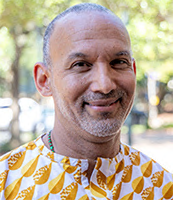
This newsletter feature on "profiles in practice" provides brief overviews of the recent activities of researchers and activists in African diaspora subjects. Please contact Chris Fennell (cfennell@illinois.edu) if you would like to contribute a profile for a future newsletter issue.
Dr. Terrance M. Weik is a Professor and Director of Graduate Studies in the Department of Anthropology at the University of South Carolina in Columbia. He has worked for decades to enhance our understanding of the complexities of African diaspora histories. His research has focused on historical archaeology, African diaspora studies, dynamics of ethnogenesis, and issues of racism in America.
Weik's 2012 book, The Archaeology of Antislavery Resistance was published in the "American Experience in Archaeological Perspective" series by the University of Florida Press. His analysis provides an overview of studies and scholarship on intersecting themes of agency, resistance, freedom, liberty, and ethnogenesis. The literature and geographic scope covered are exceptional in breadth and diversity, and Weik's overview analysis of the literature is concise and excellent. This 2012 book-length study is representative of the tremendous challenge he has taken on in his research career -- to find and illuminate the lost histories of sites of self-liberation in defiance of oppression. In doing so, Weik also presents findings of practical impact, showing needed changes in archaeological reconnaissance and survey methods to detect and investigate ephemeral sites of covert, strategic activities.
Weik further elaborated on the intersecting themes of racism and cultural interactions for Seminoles in his 2012 article "Race and the Struggle for a Cosmopolitan Archaeology." This study was published in the peer-reviewed Historical Archaeology journal. Weik's excellent article emphasized the analytic benefits to be gained by pursuing a comparative, international perspective for evaluating particular cases of racial structures and their impacts. His international reputation as a scholar writing on the subject of racism, slavery, cultural interactions, and self-liberation dynamics was further recognized in 2020 by his recruitment to author a chapter on "Enslavement and Emancipation" for the prestigious, edited volume, The Routledge Handbook of Global Historical Archaeology.
In 2014, Weik published another excellent article on "The Archaeology of Ethnogenesis" in the peer-reviewed journal, Annual Reviews of Anthropology. This work built upon his 2009 article on ethnogenesis among the Seminole peoples published in the peer-reviewed, International Journal of Historical Archaeology. In these 2009 and 2014 articles, he again presents a thorough and insightful analysis of the diverse ways in which scholars have addressed the concepts of cultural ethnogenesis, creolization, and hybridity. In combination with his research on the intersections of African diaspora and indigenous cultures among the Black Seminoles, published in part in the Archaeology of Antislavery Resistance, these articles helped to cement Weik's international reputation as a leading, intellectual authority of the subject of ethnogenesis and cultural interactions in contexts of colonial structures.
In 2019, Weik also published and edited a volume of studies, entitled The Archaeology of Removal in North America (University Press of Florida). In his introductory chapter in this book, entitled "Anthropological, Theoretical, and Historical Contexts of Removal," his survey and analysis of the subject area provides fresh observations about intersecting theoretical frameworks and related topics. He advises readers of ways in which they can effectively navigate between scrutiny of past oppressions and respectful analysis of the agencies of those populations targeted by those repressive regimes. The book overall presents an excellent collection of 11 authors and their presented studies, which is a testament to Weik's work in composing the volume, recruiting the contributors, and the high quality of his editorial guidance to those authors.
Weik's topical chapter in The Archaeology of Removal in North America, entitled "Mapping Chickasaw Removal," demonstrates analytic rigor by considering multiple hypotheses to arrive at the most persuasive evaluation of the available evidence. Weik details the methods of heritage erasure that were part of colonial impacts. He further analyzes the evidence from this research project in his peer-reviewed article entitled "Engendering Labor, African Enslavement, and Human-Horse Relations in Chickasaw Territory," in the Journal of African Diaspora Archaeology and Heritage (2019). This analysis presents an innovative, intersectional analysis by employing insights from multiple theoretical frameworks, including critical animal studies, feminist perspectives, African diaspora and indigenous studies, and careful consideration on non-human agencies.
Weik's diverse interests turned to a new initiative in 2021. He has served as principal investigator, collaborating with Dr. Eric Jones (U. South Carolina), to study the history of African-American reparations from 1800-2000 with a focus on Hilton Head, South Carolina. Weik started researching reparations topics in the early 2000s. Jones and Weik's mutual interests in racism, heritage, and geographic dynamics led to development of their project entitled "Reparations and Lowcountry Racial Landscapes." This project is funded by the "Racial Justice and Social Equity Research Fund" at the University of South Carolina.
[Return to table of contents]
Recent Dissertations on Archaeology and History

The following, non-exhaustive list of dissertations and masters theses on African diaspora archaeology and history for the period of September 2022 to September 2023 was compiled by Chris Fennell based on listings in the Proquest.com service. The September 2005, 2006, 2007, 2008, 2009, and 2010 issues of the African Diaspora Archaeology Newsletter provided similar compilations of dissertations and theses on archaeology and history for the period of 2000-2010. The September 2022 issue provides a compilation of dissertations and theses in archaeology for 2010-2022. The December 2022 issue provides a compilation of dissertations and theses in history for 2010-2022. If you are aware of other recent dissertations, please email me, and I will include the information in a future newsletter edition. The dissertations listed below are doctoral theses (Ph.D.), unless otherwise indicated (M.A. or M.S.), and are listed in chronological order by year and then alphabetic order by the author name within each year. Abstracts and full texts are available online from the Proquest.com service.
Archaeology
Amplifying Public Archaeology and Critically-Engaged Practices in New York State, by Kristin Clyne-Lehmann, Ph.D., State University of New York at Binghamton, 2023.
Sisters and Stewards: Women and Community-Building at the African Meeting House on Nantucket, MA, by Sean A. Fairweather, M.A., University of Massachusetts Boston, 2023.
A Geophysical Survey of a 19th Century Plantation Site in Baltimore County, Maryland, by Mikala M. Hardie, M.A., Indiana University of Pennsylvania, 2023.
A Black Mount Vernon: Exploring Enslaved Homespace and Family at Mount Vernon Plantation, by Heather Little, M.A., College of William and Mary, 2023.
A Spatial Analysis Survey of Hickory Hill Cemetery, by Makenna Elisabeth Chandler, M.A., Florida State University, 2022.
Beyond Labor -- Archaeologies of Race and Childhood in a West Virginia's Coal Company Towns, by Robert Carl DeMuth, Ph.D., Indiana University, 2022.
"The Circle of Your Acquaintance": Early 19th Century Ceramic Symbolism and Constructions of Black Womanhood at the Boston-Higginbotham House, Nantucket, MA, by Lissa J. Herzing, M.A., University of Massachusetts Boston, 2022.
Fugitivity, Confinement, and the Afterlife of Slavery in Contemporary African American Migration Narratives, by Juyoun Jang, Ph.D., University of Mississippi, 2022.
Ground-Penetrating Radar (GPR) Survey and Spatial Analysis of the George and Addie Giddens Cemetery, Opelika, AL, by Hayden C. Malloch, M.A., Auburn University, 2022.
Investigation of Subsurface Features at 15TM35: The Bibb Escapes/Gatewood Plantation, by Douglas William VonStrohe, M.A., University of Maryland, College Park, 2022.
History
Mad Enough to Kill: Understanding the Complexities of Suicide and Akan Cosmology on the Middle Passage, by Nancy A. Andoh, M.A., University of North Carolina at Chapel Hill, 2023.
Recipe for an Identity: Reclaiming an African Identity Through Southern Foodways, by Teresa Dawn Beckelheimer, M.A., University of Texas at San Antonio, 2023.
Confronting Legacies of Loss: Negotiating Intergenerational Inequalities in Afro-Brazilian 'Traditional' Communities, by Shelly Annette Biesel, Ph.D., University of Georgia, 2023.
Racism in Argentina and the Blackness Problem. The Change in Perception of Afro-Descendants in Buenos Aires and the New Dimensions of Blackness in Argentina (1880-1930), by Juan Borgatello, Ph.D., Trent University (Canada), 2023.
Slavery's Fugitives: Runaways, Slave-Catchers, and Reenslavement in the United States, 1787-1850, by Jordan D. Grant, Ph.D., American University, 2023.
Once Enslaved: Formerly Enslaved People and Antislavery Politics in Nineteenth Century America, by Bryan LaPointe, Ph.D., Princeton University, 2023.
Multiple Stories: Urbanism, Interpretation, and the Historic House Museum, by Meggan Rose McCarthy, Ph.D., Middle Tennessee State University, 2023.
Material Bodies: Race, Gender, and Women in the Early American South, by Morgan Taylor McCullough, Ph.D., College of William and Mary, 2023.
Retracing the Path: West African Muslims' Reinterpretation of the British Colonial Cartographic Project, 1780–1840, by Otha Malik Nash, M.A., Morgan State University, 2023.
Elite Creole Culture: Planter Identity Formation in Antigua, 1750–1840, by Erik D. Noren, Ph.D., Wayne State University, 2023.
The Effects of Religious Syncretism on African Christianity, by Isaiah Oluwajemiriye Olatoyan, Ph.D., Midwestern Baptist Theological Seminary, 2023.
Home and Hell: The Great Migration and the Making of Sundown Towns in Appalachia, by Matthew C. O'Neal, Ph.D., University of Georgia, 2023.
Gracious Suburban Life: Landscape, Race, and the Making of Place Through Urban Development in Raleigh, N.C., 1910-1965, by Nicholas Andrew Serrano, Ph.D., North Carolina State University, 2022.
Women of the Encomienda: Households and Dependents in Sixteenth-Century Yucatan, Mexico, by Hannah R. Abrahamson, Ph.D., Emory University, 2022.
Minting Slavery in the Colonial Andes: Labor and Race in Potosí and Lima, by James Almeida, Ph.D., Harvard University, 2022.
Culture and Containment: Race, Geographic Mobility, and Popular Culture in the United States, 1845-1900, by Colin L. Anderson, Ph.D., George Washington University, 2022.
Citizens of a Silenced History: The Legacy of African Slavery and Racial Contours of Citizenship in the Late Ottoman Empire and Early Turkish Republic, 1857-1933, by Ezgi Cakmak, Ph.D., University of Pennsylvania, 2022.
Ancestors and Algorithms: Ethnocomputing AI with African and African Diasporic Heritage, by Tameekia Cooper, Ph.D., University of Michigan, 2022.
Subjected to Feeling: Slavery and Personhood in Nineteenth-Century Brazil and Cuba, by Isabela Machado de Oliveira Fraga, Ph.D., University of Chicago, 2022.
A Freedom No Greater than Bondage: Black Refugees and Unfree Labor at the Dawn of Mass Incarceration during the Civil War and Reconstruction, by Samantha Quiambao de Vera, Ph.D., University of California, San Diego, 2022.
Potlikker Narratives for Teaching Freedom: Towards an Afrocentric and Emancipatory Black Vernacular Arts Pedagogy, by Anne Fraioli, Ph.D., University of Wisconsin at Madison, 2022.
Race, Place, and Space: Historicizing Blackness and Mobility, by Matthew Howard, Ph.D., University of Washington, 2022.
Contested Space: Mobilities, Networks, and the Pursuit of Freedom in the Great Dismal Swamp Region, by Christy Hyman, Ph.D., University of Nebraska at Lincoln, 2022.
.
The Last Atlantic Revolution: Reconstruction and the Struggle for Democracy in the Americas, 1861-1912, by Samantha Payne, Ph.D., Harvard University, 2022.
Beliefs, Identity, and an African American Cemetery: An Exploratory Study of Difficult History Curricular Decision-Making, by Shannon Peck-Bartle, Ph.D., University of South Florida, 2022.
Acknowledgement, Education, Memory: Reframing the Cemetery Landscapes of the Enslaved, by Aubrey L. Phillips, M.A., Louisiana State University and Agricultural & Mechanical College, 2022.
Spectacular Pain: Violence and the White Gaze in American Commemorative Culture, by Shona Mhairi Thompson, Ph.D., Lancaster University (UK), 2022.
Black Cemeteries Matter: The Erasure of Historic Black Cemeteries in Polk County, Florida, by Juliana C. Waters, M.A., University of South Florida, 2022.
To Count and Be Counted: Quantification in the Age of American Slavery, by Meagan E. Wierda, Ph.D., Rutgers, State University of New Jersey, School of Graduate Studies, 2022.
"The Monstrous Tinder-Dry Rotten Shell": The Ruination and Destruction of the Plantation Big House in the Literature of the U.S. South, 1865–1939, by Cameron Lee Winter, Ph.D., University of Georgia, 2022.
The Hidden Truths of the Trail of Tears: A Story of Slavery, by Cassandra Wynn, M.A., Southern New Hampshire University, 2022.
Ketanji Brown Jackson Says 'Discomfort'
Must Not Prevent Teaching Black History
By Zach Schonfeld
 The Hill
The Hill
September 15, 2023
"Supreme Court Justice Ketanji Brown Jackson warned Friday that the nation can't waver from teaching Black history as she marked the 60th anniversary of an Alabama church bombing that killed four Black girls."
"'If we're going to continue to move forward as a nation, we cannot allow concerns about discomfort to displace knowledge, truth or history,' Jackson said during a visit to the church."
"'It is certainly the case that parts of this country's story can be hard to think about,' she continued. 'I know that atrocities like the one we are memorializing today are difficult to remember and relive. But I also know that it is dangerous to forget them.'"
"The 16th Street Baptist Church bombing in Birmingham, Ala., committed by Ku Klux Klan members in 1963 killed four Black girls and injured more than a dozen others. The tragedy helped spur support for federal civil rights legislation."
"Jackson, the first Black woman to serve on the Supreme Court, acknowledged the trip was her first visit to the state. But she stressed that 'I know Alabama' because her parents had made sure to teach her about the Civil Rights Movement growing up."
"'My parents also taught me about the darker moments of the time -- the dogs, the fire hoses, the bombs,' Jackson said. 'There was a reason my parents felt it was important to introduce me to those uncomfortable topics, and it was not to make me feel like a victim or crush my spirits. To the contrary, my parents understood that I had to know those hard truths in order to expand my horizons.'"
"'They understood that we can only know where we are and where we're going if we realize where we've been,' she added."
[Read this full article online >>>].
Michael Harriot's "Black AF History"
Could Hardly Come at a Better Time
By Ericka Taylor
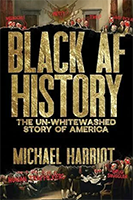 National Public Radio
National Public Radio
September 22, 2023
"Over the past few years, it seems that rarely a week has gone by without a news story chronicling the renewed debate about whose history matters and how -- or whether -- it can be taught."
"There have been countless specious claims about Critical Race Theory (a graduate-level framework that examines racial inequality) being taught in elementary schools. Every state but six (so far) has seen proposals to restrict the teaching of 'divisive' topics -- like the horrors of slavery, according Education Week. And, last year, there were more requests for book bans than there had been in decades. (We can at least hope that this book's inevitable banning will only serve to raise its profile even more.)"
"In a desert of denialism, Harriot's book is a welcome oasis."
"Fans of the renowned journalist and cultural critic will be happy to find Harriot's signature wit on full display. They will also be unsurprised that he pulls no punches. Harriot makes his central thesis clear early on: 'The story of America is a fantastical, overwrought, and fictive tale. It is a fantasy where Christopher Columbus discovered a land that he never set foot in. . . . It is George Washington's cherry tree and Abraham Lincoln's log cabin. It is the story of slaves who spontaneously teleported themselves here with nothing but strong backs and a brainful of negro spirituals. It is Betsy Ross's sewing kit and Paul Revere's horse and Thomas Jefferson's pen and Benjamin Franklin's eyeglasses and George Washington's teeth and liberty and justice for all. And it is a history predicated on lies.'"
"Harriot peels back the layers of those lies to reveal stories about the Black experience in this country that are as remarkable for their content as they are for their absence from our history textbooks. He explains how enslaved people skilled at growing rice on the west African coast were responsible for saving 'the entire Carolina economic system from collapse -- with the introduction of America's first edible cash crop.' He breaks down how a massive slave rebellion accelerated the process of the Territory of Orleans becoming the state of Louisiana. He documents the brief period during which formerly enslaved people actually received the 40 acres promised them by General Sherman -- until the land was taken back and returned to its former Confederate owners."
[Read this full article online >>>].
[Return to table of contents]
Frederick Douglass Book Prize Finalists
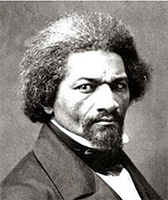 Gilder Lehrman Center
Gilder Lehrman Center
Press Release
August, 2023
Yale University's Gilder Lehrman Center for the Study of Slavery, Resistance, and Abolition has announced the finalists for the twenty-fifth annual Frederick Douglass Book Prize, one of the most coveted awards for the study of the African American experience. Jointly sponsored by the Gilder Lehrman Institute of American History in New York City and the Gilder Lehrman Center for the Study of Slavery, Resistance, and Abolition at the MacMillan Center at Yale University, this annual prize of $25,000 recognizes the best book written in English on the topics of slavery, resistance, or abolition published in the preceding year.
The finalists for the 2023 prize are: R. Isabela Morales for Happy Dreams of Liberty: An American Family in Slavery and Freedom (Oxford University Press); Simon P. Newman for Freedom Seekers: Escaping from Slavery in Restoration London (University of London Press); and David Silkenat for Scars on the Land: An Environmental History of Slavery in the American South (Oxford University Press).
From a total of 78 submissions, the finalists were selected by a jury of scholars; the jury's descriptions of the three finalists follow.
Happy Dreams of Liberty by R. Isabela Morales is a compelling multi-generational family saga that shows us the shifting meanings of race and gender in the United States as they relate to privilege and hardship -- and how what it meant to be free depended on where and when you lived. Morales shows her skill as an historian by giving readers well-researched historical contexts of the regions in which family members settled and moved. She reveals her gifts as a writer by using family letters and archival sources to bring to life their individual struggles for equality and a better future for their loved ones. Dr. Morales is the Education and Exhibit Manager for the Stoutsburg Sourland African American Museum in Skillman, New Jersey.
In Freedom Seekers, Simon Newman turns our preconceptions of racial slavery as being a product of colonialism by showing us how embedded it was in Restoration London. He takes us on a vivid a tour of the neighborhoods and docksides of the city, introducing readers to the large and diverse communities of Black Londoners. Through press reports and contemporary illustrations, we can imagine the escape routes of enslaved Africans and South Asians who sought their freedom by melding into the metropolis. Newman also shows us the world of enslavers who used London's first established newspaper for runaway advertisements to secure their return. Freedom Seekers is a powerful testimony to people's desire for liberty and control over their lives. Currently a Research Fellow at the Institute for Research in the Humanities, University of Wisconsin at Madison, Dr. Newman is the Sir Denis Brogan Professor of American History (Emeritus) and Honorary Professorial Research Fellow at the University of Glasgow.
David Silkenat's elegantly written yet often chilling book, Scars on the Land, deals with how enslaved men and women worked and lived in the physical environment of the antebellum U.S. South. It is the first comprehensive history of nineteenth-century slavery to examine in depth how the environment fundamentally shaped the contours of every aspect of enslaved peoples' sometimes miserable existence, and how in turn enslaved people shaped the environment they lived in. It is a stunning work of scholarship that provides new insights into American slavery by taking seriously the fragility of a landscape shaped, and indeed scarred, by the demands of an environmentally destructive plantation regime. Dr. Silkenat is a Senior Lecturer in American History in the School of History, Classics and Archaeology at the University of Edinburgh.
Conference
Taking Our Time: Healing Through Black History, Family, and Communities
College of William & Mary
The Lemon Project: A Journey of Reconciliation
14th Annual Lemon Project Spring Symposium
In-Person and Virtual Event, March 22-23, 2024
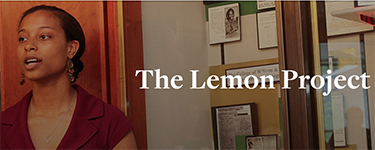 About The Lemon Project: A Journey of Reconciliation
About The Lemon Project: A Journey of Reconciliation
Founded in 2009, the Lemon Project is the second institutionally funded project of its kind in the United States. The Lemon Project is a multifaceted and dynamic attempt to rectify wrongs perpetrated against African Americans by William & Mary through action or inaction. An ongoing endeavor, The Lemon Project explores and encourages scholarship on the 330-year relationship between African Americans and William & Mary. The Lemon Project builds bridges between William & Mary and African American communities through research, programming, and supporting students, faculty, and staff.
Call for Proposals
Building on our last symposium that broadly focused on Black life, history, and culture, we draw inspiration from Fannie Lou Hamer’s words for our 2024 conference as we reflect on historical and current practices of self and communal healing. As Hamer notes, the time and existence of Black people in America are marked by a struggle for freedom that yielded many triumphs but also has exhausted generations resulting in diminished well-being and untimely loss of Black lives.
The 2024 theme, “Taking Our Time: Healing Through Black History, Family, and Communities,” explores ways Black people are overcoming the generational trauma of slavery and its legacies. We believe there is strength in gathering to discuss and enact healing and reclamation practices. In the words of Tricia Hersey, author and founder of the Nap Ministry, the legacy of exhaustion stops with us. We invite you into this timely gathering that we hope will catalyze change that liberates.
The 2024 Spring Symposium will explore the following questions: How do we draw from the knowledge of past justice seekers and healers to repair our communities? How do we take time to engage in healing practices? What will Black futures look like as we create space for healing transgenerational trauma tied to discrimination and racial violence? What can institutions do to reduce harm inflicted on Black and people of color? How do we get the country to acknowledge and address the continuing harm of past atrocities?
Our symposium is multi-disciplinary and open to all. We seek proposals from people who explore Black resistance, healing, and reclamation, including but not limited to academic and descendant researchers and historians, educators, genealogists, activists, spiritual practitioners, and members of Greater Williamsburg communities and beyond. We invite a broad range of topics from the fields of American Studies, Black Studies, Anthropology, History, Public Humanities, Preservation, and STEM. We also invite community organizers, activists, and wellness practioners to submit proposals in areas such as cultural production (art, poetry, music), wellness, and spirituality. Learn more from the conference web site.
New Film
The Esmeraldas Beach
Directed by Patrice Raynal, 2020, France and Ecuador, 58 mins.
Documentary, French and Spanish with English subtitles, ArtMattan Films.
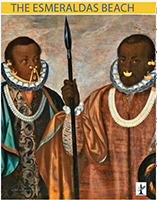 In today's Ecuador, the black population, the descendants of enslaved Africans, continue to experience strong racial and social discrimination. Yet, people in the community still strive to value their specific culture and transmit the rebellious memory of their ancestors who fought for freedom. The Esmeraldas Beach sets out to expose the invisibility of Afro-Ecuadorians and rectify the narrative of the country's history with the film's central protagonist, Juan García, who has worked on that project for years. He developed a school book that presents black Ecuadorians prominently since the only Afro-descendants shown in local school books are portrayed next to a marimba and football. The documentary also addresses the 1999 assassination of Afro-Ecuadorian legislator and presidential hopeful, Jaime Hurtado (ArtMattan Films).
In today's Ecuador, the black population, the descendants of enslaved Africans, continue to experience strong racial and social discrimination. Yet, people in the community still strive to value their specific culture and transmit the rebellious memory of their ancestors who fought for freedom. The Esmeraldas Beach sets out to expose the invisibility of Afro-Ecuadorians and rectify the narrative of the country's history with the film's central protagonist, Juan García, who has worked on that project for years. He developed a school book that presents black Ecuadorians prominently since the only Afro-descendants shown in local school books are portrayed next to a marimba and football. The documentary also addresses the 1999 assassination of Afro-Ecuadorian legislator and presidential hopeful, Jaime Hurtado (ArtMattan Films).
[Return to table of contents]
New Book
The Black Reparations Project: A Handbook for Racial Justice
Edited by William Darity, A. Kirsten Mullen, and Lucas Hubbard
University of California Press
258 pp., ISBN-13: 978-0520383814, 2023.
Description from the Publisher:
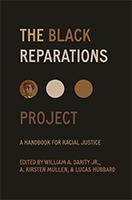 This groundbreaking resource moves us from theory to action with a practical plan for reparations.
This groundbreaking resource moves us from theory to action with a practical plan for reparations.
A surge in interest in black reparations is taking place in America on a scale not seen since the Reconstruction Era. The Black Reparations Project gathers an accomplished interdisciplinary team of scholars -- members of the Reparations Planning Committee -- who have considered the issues pertinent to making reparations happen. This book will be an essential resource in the national conversation going forward.
The first section of The Black Reparations Project crystallizes the rationale for reparations, cataloguing centuries of racial repression, discrimination, violence, mass incarceration, and the immense black-white wealth gap. Drawing on the contributors' expertise in economics, history, law, public policy, public health, and education, the second section unfurls direct guidance for building and implementing a reparations program, including draft legislation that addresses how the program should be financed and how claimants can be identified and compensated. Rigorous and comprehensive, The Black Reparations Project will motivate, guide, and speed the final leg of the journey for justice.
[Return to table of contents]
New Book
Citizenship and the Diaspora in the Digital Age:
Farooq Kperogi and the Virtual Community
By Toyin Falola
Lexington Books
384 pp., ISBN-13: 978-1666933413, 2023.
Description from the Publisher:
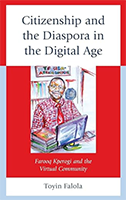 In Citizenship and the Diaspora in the Digital Age: Farooq Kperogi and the Virtual Community, Toyin Falola examines how the members of the Nigerian diaspora create a virtual community and instrumentalize the digital age to speak about the nation and its failures, possibilities, and promises. This book depicts individuals' relationships with society and how the world's progressive shift toward technology and globalization does not disregard the concept of society and its members. As a result of this shift, people have been migrating to new places without giving up their citizenship in their home countries. This book explores how migrants are focused on the idea of a virtual community, examines how citizens' roles have evolved through time, and displays society's essential principles in this light.
In Citizenship and the Diaspora in the Digital Age: Farooq Kperogi and the Virtual Community, Toyin Falola examines how the members of the Nigerian diaspora create a virtual community and instrumentalize the digital age to speak about the nation and its failures, possibilities, and promises. This book depicts individuals' relationships with society and how the world's progressive shift toward technology and globalization does not disregard the concept of society and its members. As a result of this shift, people have been migrating to new places without giving up their citizenship in their home countries. This book explores how migrants are focused on the idea of a virtual community, examines how citizens' roles have evolved through time, and displays society's essential principles in this light.
Furthermore, it evaluates social commentaries enhanced by the dynamics of the digital age, such as societal issues like education in Nigeria, the question of democracy, challenges facing the country, and the development of a national language. Many of these societal challenges are examined in this book from the perspective of Farooq Kperogi, who has conducted extensive studies and published on the above themes. This is balanced against emerging facts, Nigerians' positions, and disregarded realities. Kperogi's relentless writings on Nigeria make him a preeminent figure whose positions are valuable to the understanding of modern Nigeria.
[Return to table of contents]
New Book
Our History Has Always Been
Contraband: In Defense of Black Studies
Edited by Colin Kaepernick, Robin D. G. Kelley, and Keeanga-Yamahtta Taylor
Haymarket Books
220 pp., ISBN-13: 979-8888900574, 2023.
Description from the Publisher:
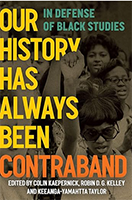 Since its founding as a discipline, Black Studies has been under relentless attack by social and political forces seeking to discredit and neutralize it. Our History Has Always Been Contraband was born out of an urgent need to respond to the latest threat: efforts to remove content from an AP African American Studies course being piloted in high schools across the United States. Edited by Colin Kaepernick, Robin D. G. Kelley, and Keeanga-Yamahtta Taylor, Our History Has Always Been Contraband brings together canonical texts and authors in Black Studies, including those excised from or not included in the AP curriculum.
Since its founding as a discipline, Black Studies has been under relentless attack by social and political forces seeking to discredit and neutralize it. Our History Has Always Been Contraband was born out of an urgent need to respond to the latest threat: efforts to remove content from an AP African American Studies course being piloted in high schools across the United States. Edited by Colin Kaepernick, Robin D. G. Kelley, and Keeanga-Yamahtta Taylor, Our History Has Always Been Contraband brings together canonical texts and authors in Black Studies, including those excised from or not included in the AP curriculum.
Featuring writings by: David Walker, Frederick Douglass, Anna Julia Cooper, Zora Neale Hurston, W. E. B. Du Bois, C. L. R. James, James Baldwin, June Jordan, Angela Y. Davis, Robert Allen, Barbara Smith, Toni Cade Bambara, bell hooks, Barbara Christian, Patricia Hill Collins, Cathy J. Cohen, Kimberlé Crenshaw, Saidiya Hartman, Khalil Gibran Muhammad, and many others.
Our History Has Always Been Contraband excerpts readings that cut across and between literature, political theory, law, psychology, sociology, gender and sexuality studies, queer and feminist theory, and history. This volume also includes original essays by editors Kaepernick, Kelley, and Taylor, elucidating how we got here, and pieces by Brea Baker, Marlon Williams-Clark, and Roderick A. Ferguson detailing how we can fight back.
To read Our History Has Always Been Contraband is to be an outlaw for liberation. These writings illuminate the ways we can collectively work toward freedom for all -- through abolition, feminism, racial justice, economic empowerment, self-determination, desegregation, decolonization, reparations, queer liberation, cultural and artistic expression, and beyond.
[Return to table of contents]
New Book
Black Folk: The Roots of the Black Working Class
By Blair L. M. Kelley
Liveright Press
352 pp., ISBN-13: 978-1631496554, 2023.
Description from the Publisher:
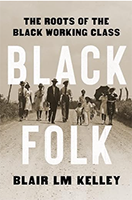 There have been countless books, articles, and televised reports in recent years about the almost mythic "white working class," a tide of commentary that has obscured the labor, and even the very existence, of entire groups of working people, including everyday Black workers. In this brilliant corrective, Black Folk, acclaimed historian Blair L. M. Kelley restores the Black working class to the center of the American story.
There have been countless books, articles, and televised reports in recent years about the almost mythic "white working class," a tide of commentary that has obscured the labor, and even the very existence, of entire groups of working people, including everyday Black workers. In this brilliant corrective, Black Folk, acclaimed historian Blair L. M. Kelley restores the Black working class to the center of the American story.
Spanning two hundred years -- from one of Kelley’s earliest known ancestors, an enslaved blacksmith, to the essential workers of the Covid-19 pandemic -- Black Folk highlights the lives of the laundresses, Pullman porters, domestic maids, and postal workers who established the Black working class as a force in the late nineteenth and early twentieth centuries. Taking jobs white people didn't want and confined to segregated neighborhoods, Black workers found community in intimate spaces, from stoops on city streets to the backyards of washerwomen, where multiple generations labored from dawn to dusk, talking and laughing in a space free of white supervision and largely beyond white knowledge. As millions of Black people left the violence of the American South for the promise of a better life in the North and West, these networks of resistance and joy sustained early arrivals and newcomers alike and laid the groundwork for organizing for better jobs, better pay, and equal rights.
As her narrative moves from Georgia to Philadelphia, Florida to Chicago, Texas to Oakland, Kelley treats Black workers not just as laborers, or members of a class, or activists, but as people whose daily experiences mattered -- to themselves, to their communities, and to a nation that denied that basic fact. Through affecting portraits of her great-grandfather, a sharecropper named Solicitor, and her grandmother, Brunell, who worked for more than a decade as a domestic maid, Kelley captures, in intimate detail, how generation after generation of labor was required to improve, and at times maintain, her family's status. Yet her family, like so many others, was always animated by a vision of a better future. The church yards, factory floors, railcars, and postal sorting facilities where Black people worked were sites of possibility, and, as Kelley suggests, Amazon package processing centers, supermarkets, and nursing homes can be the same today. With the resurgence of labor activism in our own time, Black Folk presents a stirring history of our possible future.
[Return to table of contents]
New Book
Vodou en Vogue: Fashioning Black
Divinities in Haiti and the United States
By Eziaku Atuama Nwokocha
University of North Carolina Press
208 pp., ISBN-13: 978-1469674018, 2023.
Description from the Publisher:
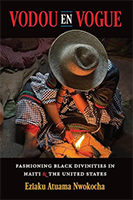 In Haitian Vodou, spirits impact Black practitioners' everyday lives, tightly connecting the sacred and the secular. As Eziaku Atuama Nwokocha reveals in this richly textured book, that connection is manifest in the dynamic relationship between public religious ceremonies, material aesthetics, bodily adornment, and spirit possession. Nwokocha spent more than a decade observing Vodou ceremonies from Montreal and New York to Miami and Port-au-Prince. She engaged particularly with a Haitian practitioner and former fashion designer, Manbo Maude, who presided over Vodou temples in Mattapan, Massachusetts, and Jacmel, Haiti. With vivid description and nuanced analysis, Nwokocha shows how Manbo Maude's use of dress and her production of ritual garments are key to serving Black gods and illuminate a larger transnational economy of fashion and spiritual exchange.
In Haitian Vodou, spirits impact Black practitioners' everyday lives, tightly connecting the sacred and the secular. As Eziaku Atuama Nwokocha reveals in this richly textured book, that connection is manifest in the dynamic relationship between public religious ceremonies, material aesthetics, bodily adornment, and spirit possession. Nwokocha spent more than a decade observing Vodou ceremonies from Montreal and New York to Miami and Port-au-Prince. She engaged particularly with a Haitian practitioner and former fashion designer, Manbo Maude, who presided over Vodou temples in Mattapan, Massachusetts, and Jacmel, Haiti. With vivid description and nuanced analysis, Nwokocha shows how Manbo Maude's use of dress and her production of ritual garments are key to serving Black gods and illuminate a larger transnational economy of fashion and spiritual exchange.
This innovative book centers on fashion and other forms of self-presentation, yet it draws together many strands of thought and practice, showing how religion is a multisensorial experience of engagement with what the gods want and demand from worshippers. Nwokocha's ethnographic work will challenge and enrich readers' understandings not only of Vodou and its place in Black religious experience but also of religion's entanglements with gender and sexuality, race, and the material and spiritual realms.
[Return to table of contents]
New Book
Living Ceramics, Storied Ground:
A History of African American Archaeology
By Charles E. Orser Jr.
University Press of Florida
264 pp., ISBN-13: 9780813080260, 2023.
Description from the Publisher:
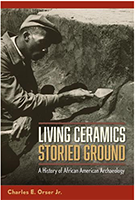 Exploring the archaeological study of enslavement and emancipation in the United States, this book discusses significant findings, the attitudes and approaches of past researchers, and the development of the field. Living Ceramics, Storied Ground highlights the ways historical archaeology can contribute to the study of African diaspora history and culture, as much of the daily life of enslaved people was not captured through written records but is evidenced in the materials and objects left behind.
Exploring the archaeological study of enslavement and emancipation in the United States, this book discusses significant findings, the attitudes and approaches of past researchers, and the development of the field. Living Ceramics, Storied Ground highlights the ways historical archaeology can contribute to the study of African diaspora history and culture, as much of the daily life of enslaved people was not captured through written records but is evidenced in the materials and objects left behind.
Including debates about cultural survivals in the 1920s, efforts to find "Africanisms" at Kingsley plantation in the 1960s, and the realization -- as late as the 1970s -- that colonoware pottery was created by enslaved people, Charles Orser looks at the influential and often mistaken ideas of prominent anthropologists, archaeologists, and historians. Extending to the present, Orser describes how archaeology better recognizes and appreciates the variety and richness of African American culture during slavery, due in large part to the Black archaeologists, past and present, who have worked to counter racism in the field.
While acknowledging the colonial legacy of archaeology, Charles Orser outlines the ways the discipline has benefitted by adopting antiracist principles and partnerships with descendant communities. This book points to the contributions of excavators and researchers whose roles have been overlooked and anticipates exciting future work in African American archaeology.
[Return to table of contents]
New Book
Dark Days: Fugitive Essays
By Roger Reeves
Graywolf Press
232 pp., ISBN-13: 978-1644452417, 2023.
Description from the Publisher:
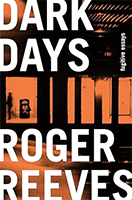 A crucial book that calls for community, solidarity, and joy, even in -- especially in -- these dark days.
A crucial book that calls for community, solidarity, and joy, even in -- especially in -- these dark days.
In his debut work of nonfiction, award-winning poet Roger Reeves finds new meaning in silence, protest, fugitivity, freedom, and ecstasy. Braiding memoir, theory, and criticism, Reeves juxtaposes the images of an opera singer breaking the state-mandated silence curfew by singing out into the streets of Santiago, Chile, and a father teaching his daughter to laugh out loud at the planes dropping bombs on them in Aleppo, Syria. He describes the history of the hush harbor -- places where enslaved people could steal away to find silence and court ecstasy, to the side of their impossible conditions. In other essays, Reeves highlights a chapter in Toni Morrison's Beloved to locate common purpose between Black and Indigenous peoples; he visits the realities of enslaved people on McLeod Plantation, where some of the descendants of those formerly enslaved lived into the 1990s; and he explores his own family history, his learning to read closely through the Pentecostal church tradition, and his passing on of reading as a pleasure, freedom, and solace to his daughter, who is frightened the police will gun them down.
Together, these groundbreaking essays build a profound vision for how to see and experience the world in our present moment, and how to strive toward an alternative existence in intentional community underground. "The peace we fight and search for," Reeves writes, "begins and ends with being still."
[Return to table of contents]
New Book
Legacies of Trade and Empire: Breaking Silences
Edited by Shihan de Silva Jayasuriya and Beheroze Shroff
Cambridge Scholars Publishing
214 pp., ISBN-13: 978-1-5275-9432-6, 2023.
Description from the Publisher:
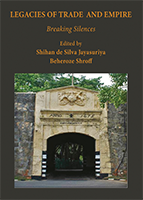 This book problematises established histories of slavery and indentured labour in Africa, Asia, the Caribbean and South America, as carried out through European empires, to interpret the impact of trade, particularly in the region surrounding the Indian Ocean. The discourse within the chapters by Shihan de Silva Jayasuriya, Ute Fendler, Tom Hoogervorst, Xin Li, Frederick Noronha, Marie-Christine Parent and Beheroze Shroff explores the aesthetics of silence, the poetics of relation, creolisation, agency, knowledge transfers, decolonisation, and the afterlife of empire, as well as the assertion of identities, musical practices, and cuisines. These critical analyses utilise case studies from India, Indonesia, Seychelles, South Africa, Sri Lanka and Suriname. To break the silence on legacies of empire, the authors look through the prisms of history, politics, economics, sociology, linguistics, literature, anthropology and ethnomusicology. They search through the annals of history for ways of living harmoniously in an increasingly globalised world.
This book problematises established histories of slavery and indentured labour in Africa, Asia, the Caribbean and South America, as carried out through European empires, to interpret the impact of trade, particularly in the region surrounding the Indian Ocean. The discourse within the chapters by Shihan de Silva Jayasuriya, Ute Fendler, Tom Hoogervorst, Xin Li, Frederick Noronha, Marie-Christine Parent and Beheroze Shroff explores the aesthetics of silence, the poetics of relation, creolisation, agency, knowledge transfers, decolonisation, and the afterlife of empire, as well as the assertion of identities, musical practices, and cuisines. These critical analyses utilise case studies from India, Indonesia, Seychelles, South Africa, Sri Lanka and Suriname. To break the silence on legacies of empire, the authors look through the prisms of history, politics, economics, sociology, linguistics, literature, anthropology and ethnomusicology. They search through the annals of history for ways of living harmoniously in an increasingly globalised world.
[Return to table of contents]
New Book
Black Feminist Constellations:
Dialogue and Translation across the Americas
Edited by Christen A. Smith and Lorraine Leu
University of Texas Press
336 pp., ISBN-13: 978-1477328293, 2023.
Description from the Publisher:
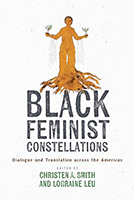 A collection of essays, interviews, and conversations by and between scholars, activists, and artists from Latin America and the Caribbean that paints a portrait of Black women's experiences across the region.
A collection of essays, interviews, and conversations by and between scholars, activists, and artists from Latin America and the Caribbean that paints a portrait of Black women's experiences across the region.
Black women in Latin America and the Caribbean suffer a triple erasure: as Black people, as women, and as non-English speakers in a global environment dominated by the Anglophone North. Black Feminist Constellations is a passionate and necessary corrective. Focused on and written by Black women of the southern Americas, the original works composing this volume make legible the epistemologies that sustain radical scholarship, art, and political organizing by Black women everywhere.
In essays, poems, and dialogues, the writers in Black Feminist Constellations reimagine liberation from the perspectives of radical South American and Caribbean Black women thinkers. The volume’s methodologically innovative approach reflects how Black women come together to theorize the world and challenges the notion that the university is the only site where knowledge can emerge. A major work of intellectual history, Black Feminist Constellations amplifies rarely heard voices, centers the uncanonized, and celebrates the overlooked work of Black women.
[Return to table of contents]
Book Review
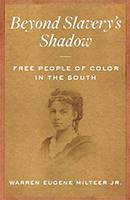
Warren E. Milteer. Beyond Slavery's Shadow: Free People of Color in the South. Chapel Hill: University of North Carolina Press, 2021. 363 pages (paper), ISBN 978-1-4696-6439-2.
H-Net Book Review, published by H-Slavery, https://networks.h-net.org/h-slavery (October, 2022).
Reviewed for H-Slavery by Patrick Luck (Florida Polytechnic University).
With Beyond the Shadow of Slavery, Warren Milteer has written an important book. Anyone who studies the history of the American South or even the United States should strongly consider reading this book as it ably and by and large convincingly reframes the history of free people of color in the American South in a way that reveals a great deal about their history and the history of the American South itself. Milteer's book is both a synthetic account, bringing together the work of the many scholars who have written about free people of color, and a work based in deep primary source research. The payoff of this deep scholarship is a portrait of the South's free people of color that is complicated, nuanced, and attentive to individual and regional diversity.
As Milteer explains in his introduction, his work is inspired by the tensions between Ira Berlin's classic Slaves Without Masters, which concluded that free people of color were, as the title states, "slaves without masters" due to increasingly harsh laws and conditions, and more recent, typically local, studies that challenge such a grim picture, most importantly Melvin Patrick Ely's Israel on the Appomattox, which uncovered lax enforcement of harsh laws and more limited change for free people of color during the antebellum period than Berlin's study suggested.[1] Milteer himself has added to this rich literature in his previous two books, which focus, respectively, on the free people of color in a single county in North Carolina and the free people of color in the entirety of North Carolina.[2] Milteer's work can be seen as an ongoing widening of his gaze, from local study to state study and finally to national study that has naturally led to Beyond the Shadow of Slavery's synthesis of the state and national with the local.
Milteer's key intervention is his claim that reading the hegemony of racial hierarchies back into colonial and even antebellum southern history hides as much as it reveals. As he points out, "hierarchies based on wealth, gender, occupation, reputation, and religion coexisted with ideas promoting white supremacy and discriminating against people of color" (p. 2). He also argues that the distinction between freedom and slavery was powerful in the colonial South and never disappeared for people of color so long as slavery existed. While attacks on free people of color increased after the American Revolution, Milteer argues that these attacks were never entirely successful and reveals several crucial reasons that free people of color were able to maintain freedom and some degree of autonomy in a world that seemed increasingly hostile to their very existence: regional distinctions, divisions among whites, the difficulties of enforcing harsh laws due to a weak state, and the ability of free people of color to fight back, often via alliances with white kin, neighbors, and other allies.
Milteer organizes Beyond the Shadow of Slavery in a generally chronological fashion. Chapter 1 details the creation of free people of color as a distinct group in the North American colonies of England, France, and Spain. Milteer argues that discomfort with this class of people arose quickly among European colonizers as "prejudice and discrimination were inherent to the colonial systems," and colonizers soon made efforts to regulate and restrict free people of color (p. 14). However, countervailing hierarchies undermined these efforts, allowing free people of color to enjoy a "contested freedom" throughout the colonial period (p. 14). Milteer does not paint an overly rosy picture of free people of color's lives in the colonial South, and he explains that discriminatory laws often had extremely negative effects on the lives of free people of color, trapping many of them in multigenerational cycles of servitude. Even so, he concludes that "the colonial South's free persons of color consistently defied attempts to create an inflexible society stratified solely on the basis of racial categorization" (p. 36). In many ways, this final statement is the core insight of the book as a whole; free people of color, repeatedly and with varying degrees of success, defied attempts by some white southerners to define them solely by their race.
Milteer then moves on to the dramatic expansion of the population of free people of color in the new United States as a result of the new possibilities for freedom created during and after the American Revolution in chapter 2 and the complicated and contested backlash against that expansion in chapter 3. As he points out, during the Revolutionary period a wave of manumissions occurred across the Upper South, often inspired by moral and ethical qualms over slavery, while only Georgia and South Carolina used racial definitions to define citizenship and rights. However, backlash began by the 1790s with "the expansion of liberty for white men and the growth of slavery across the southern landscape [contributing] to a corresponding reduction of legal protections for free people of color in the early nineteenth century" (pp. 70-71).
While much of this history is likely familiar to most readers, where Milteer shines is in his ability to show how it played out on the local level. This is particularly true of efforts to restrict the rights of free people of color and even remove them from southern states. Bans on the immigration of free people of color were almost impossible to enforce. Registration laws went largely unimplemented. Colonization (the effort to remove peoples of African descent "back" to Africa) was rejected by free people of color, and very few emigrated. Milteer argues that, on the local level, many whites were uninterested in enforcing harsh laws against their neighbors and rejected the notion that those neighbors were a threat. However, Milteer does recognize that some free people of color suffered under new restrictions. For example, apprenticeship laws were applied more widely and more harshly than before and fell disproportionately on impoverished free people of color.
In the final chapters of the book, Milteer analyzes the development of the South's free people of color in the decades leading up to the Civil War. In chapter 4, Milteer details the familial relationships of free people of color, their activities in integrated and segregated institutions (especially churches), and their many economic activities. Milteer particularly emphasizes their increasing economic importance to the southern economy and the services they provided for their neighbors and argues that their economic importance is a central reason why white southerners often defended them from attack. In chapter 5, Milteer discusses how the Nat Turner rebellion empowered proslavery radicals and white supremacists to escalate their assaults on free people of color. These attacks, including the final exclusion of free people of color from the franchise across the South, the hiring out of criminally convicted free people of color, and restrictions on education, "created serious obstacles and threatened their liberty" (p. 138). However, as always, results were mixed. For example, Milteer points out that restrictions on the education of free people of color were often flouted and attempts by radicals to legislate enslavement or removal of all free people of color failed everywhere except Arkansas.
In chapter 6, Milteer shows how free people of color were able to make their way in the increasingly hostile world of the antebellum South. While the radicals successfully "curbed the growth" of free people of color populations in the Deep South, they failed to do so in the Upper South, where the number of free people of color continued to grow rapidly (p. 180). Once again, Milteer stresses the importance of free people of color to the southern economy and argues that this, as much as anything, led white neighbors to defend them from discriminatory laws. He also stresses the extremely local nature of southern governance to explain "how a system clearly rigged against people of color in many ways still produced favorable outcomes" for them (p. 210). Finally, in chapter 7, Milteer discusses how free people of color navigated the challenges of the Civil War. Initially, many free people of color suffered as secession empowered radicals to act in more extreme ways, forcing free people of color to labor in support of rebel armies and confiscating their property to support the war effort. However, he also shows how, especially after 1863, free people of color embraced the Union cause and fought by the thousands in the United States Army. Ultimately, Milteer concludes that the Civil War and emancipation benefited most free people of color.
While Milteer's book is both excellent and essential, some readers may have minor criticisms. First, the very analytical focus of the book means that examples are almost always deployed as brief snippets to support an analytical point. Milteer rarely dwells on a story or a particular figure, making the book at times rather dry and free people of color not fully fleshed out as individuals. Second, at a few points in the book, Milteer makes a general claim about free people of color but only deploys evidence from one part of the South to support that claim. This is particularly telling when he makes general claims about free people of color's ability to resist harsh laws but only gives examples from Delaware or Maryland, two places that are very unique in relationship to free people of color, as Milteer himself recognizes. However, these are rare exceptions in a book that is otherwise attentive to nuances and regional distinctions.
Still, despite these minor criticisms, Milteer's book is an important and necessary addition to the historiography of free people of color, the American South, and the United States. Beyond the Shadow of Slavery is successful because Milteer weaves together a big story (which is likely already familiar to most readers) of shifts in the legal position of free people of color in the American South with many little stories that show how these shifts had very mixed effects on the actual lives of free people of color. As Milteer points out in his excellent conclusion, his book reveals "inconsistencies between the law and everyday behavior" (p. 255). It also, via these inconsistencies, "challenges many of our ideas about the significance of race in the history of the United States and its colonial antecedents" (p. 254). Milteer shows that while race is extremely significant to American history, it always has (and still does) interact in complex and shifting ways with other hierarchies and other features of American society.
Notes
[1]. Ira Berlin, Slaves without Masters: The Free Negro in the Antebellum South (New York: New Press, 1974), xiii; Melvin Patrick Ely, Israel on the Appomattox: A Southern Experiment in Black Freedom from the 1790s through the Civil War (New York: Alfred A. Knopf, 2004). Family, local, and regional studies and biographies about the South's free people of color are numerous, as are studies about particular aspects of their experiences. A few recent works that Milteer cites include: Kenneth R. Aslakson, Making Race in the Courtroom: The Legal Construction of Three Races in Early New Orleans (New York: New York University Press, 2014); Alejandro de la Fuente and Ariela J. Gross, Becoming Free, Becoming Black: Race, Freedom, and Law in Cuba, Virginia, and Louisiana (New York: Cambridge University Press, 2020); Jennifer Hull Dorsey, Hirelings: African American Workers and Free Labor in Early Maryland (Ithaca, NY: Cornell University Press, 2011); Tera W. Hunter, Bound in Wedlock: Slave and Free Black Marriage in the Nineteenth Century (Cambridge, MA: Belknap Press of Harvard University Press, 2017); Jessica Marie Johnson, Wicked Flesh: Black Women, Intimacy, and Freedom in the Atlantic World (Philadelphia: University of Pennsylvania Press, 2020); Martha S. Jones, Birthright Citizens: A History of Race and Rights in Antebellum America (New York: Cambridge University Press, 2018); Ted Maris-Wolf, Family Bonds: Free Blacks and Re-Enslavement Law in Antebellum Virginia (Chapel Hill: University of North Carolina Press, 2015); John Garrison Marks, Black Freedom in the Age of Slavery: Race, Status, and Identity in the Urban Americas (Columbia: University of South Carolina Press, 2020); Frank Marotti, Heaven's Soldiers: Free People of Color and the Spanish Legacy in Antebellum Florida (Tuscaloosa: University of Alabama Press, 2013); Turk McClesky, Road to Black Ned's Forge: A Story of Race, Sex, and Trade on the Colonial American Frontier (Charlottesville: University of Virginia Press, 2014); Amrita Chakrabarti Myers, Forging Freedom: Black Women and the Pursuit of Liberty in Antebellum Charleston (Chapel Hill: University of North Carolina Press, 2011); Kirt von Daake, Freedom Has a Face: Race, Identity, and Community in Jefferson's Virginia (Charlottesville: University of Virginia Press, 2012); Kimberly M. Welch, Black Litigants in the Antebellum South (Chapel Hill: University of North Carolina Press, 2018); Emily West, Family or Freedom: People of Color in the Antebellum South (Lexington: University of Kentucky Press, 2012); Julie Winch, The Clamorgans: One Family's History of Race in America (New York: Hill and Wang, 2011); and Eva Sheppard Wolf, Almost Free: A Story about Family and Race in Antebellum Virginia (Athens: University of Georgia Press, 2012).
[2]. Warren E. Milteer, Jr., Hartford County, North Carolina's Free People of Color and Their Descendants (Burlington, NC: Milteer Publishing, 2016), and North Carolina's Free People of Color, 1715-1885 (Baton Rouge: Louisiana State University Press, 2020).
[Citation: Patrick Luck. Review of Milteer, Warren E. Beyond Slavery's Shadow: Free People of Color in the South. H-Slavery, H-Net Reviews. October, 2022. This work is licensed under a Creative Commons Attribution-Noncommercial-No Derivative Works 3.0 United States License. H-Net permits the redistribution and reprinting of this work for nonprofit, educational purposes.]
[Return to table of contents]

©2023 African Diaspora Archaeology Network
Copyright and all rights reserved by
individual authors for each article.
Please send comments, suggestions,
or questions to the editor
Last updated: October 9, 2023
Text only menuSearch
|



















